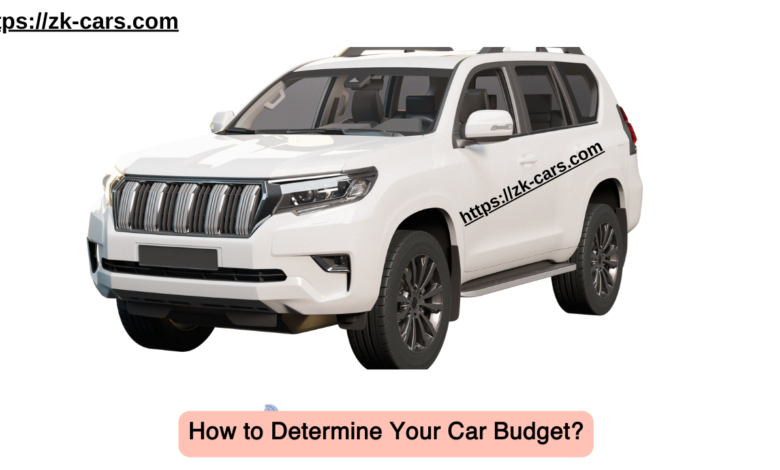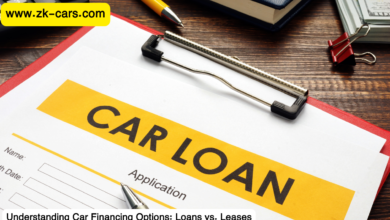
Buying a car is an exciting process, but determining your car budget is an essential step to ensure a smart and responsible purchase. Whether you’re a first-time buyer or looking to upgrade your vehicle, understanding how much you can afford is key to a smooth experience. In this car buying guide, we will walk you through various factors to consider when establishing your budget, so you can find the perfect car without breaking the bank.
1. Understanding Your Financial Situation
The first step in determining your car budget is to get a clear picture of your financial situation. You’ll need to assess your income, expenses, and savings to calculate how much you can comfortably allocate toward a new or used car. It’s important to be realistic and avoid overcommitting yourself financially.
- Calculate your monthly income: Start by adding up all your sources of income, including your salary, bonuses, and any other regular streams of revenue.
- List your monthly expenses: This includes rent or mortgage payments, utilities, groceries, transportation, insurance, and any other recurring bills.
- Account for savings: Make sure you have an emergency fund in place and that you’re not dipping into your savings to make a car purchase. Your car budget should be a portion of your disposable income, not your entire savings.
2. The 20/4/10 Rule for Car Purchases
One of the most commonly recommended methods to determine how much to spend on a car is the 20/4/10 rule. This rule helps ensure you stay within a budget while purchasing a vehicle. Here’s how it works:
- 20% down payment: You should aim to put down at least 20% of the car’s purchase price as a down payment. This reduces the amount of interest you’ll pay over the life of the loan and helps avoid negative equity.
- 4-year loan term: The car loan term should not exceed four years. A shorter loan period means you’ll pay less in interest, which saves you money in the long run.
- 10% of monthly income for car expenses: Your total car-related expenses, including the loan payment, insurance, maintenance, and fuel, should not exceed 10% of your gross monthly income.
By following the 20/4/10 rule, you’ll have a clearer framework to guide your decision-making and avoid overextending your finances.
3. Leasing vs. Buying: Which is Better for Your Budget?
When determining your car budget, another critical decision is whether to buy or lease. Both options have their financial implications, and choosing the right one depends on your budget and preferences.
Buying a Car:
- Pros:
- You own the car outright after making all payments.
- No mileage restrictions, making it ideal for those who drive long distances.
- You can modify or sell the car as you please.
- Cons:
- Higher monthly payments compared to leasing.
- The vehicle depreciates over time.
Leasing a Car:
- Pros:
- Lower monthly payments compared to buying.
- You can drive a new car every few years.
- Maintenance and repairs may be covered under warranty.
- Cons:
- Mileage limits often apply, which can result in additional fees.
- You do not own the vehicle and must return it at the end of the lease.
- Potential for fees if the car experiences excess wear and tear.
When deciding between leasing and buying, carefully consider your driving habits and long-term financial goals. Leasing can be a great option for those who want lower payments and a new car every few years, while buying is ideal for those who prefer to own their vehicle in the long run.
4. Don’t Forget Hidden Costs
When determining your car budget, it’s essential to account for the hidden costs associated with owning a vehicle. Many people focus solely on the sticker price or monthly payments, forgetting about the additional expenses that come with owning a car. These include:
- Insurance: The cost of car insurance can vary significantly based on factors such as your driving record, the car’s make and model, and your location. Make sure to shop around for the best rates before finalizing your budget.
- Registration and Taxes: Depending on your state, you may need to pay for vehicle registration and taxes, which can add up quickly.
- Maintenance and Repairs: Every car needs regular maintenance, such as oil changes, tire rotations, and brake replacements. Factor in unexpected repairs as well.
- Fuel: Consider the fuel efficiency of the car you’re interested in. If you’re buying a gas-guzzler, you’ll need to budget more for fuel costs.
- Depreciation: Cars lose value over time. If you plan to sell your vehicle in the future, consider how depreciation might affect your resale value.
Taking these hidden costs into account will give you a more accurate picture of how much you can afford to spend on a car.
5. New vs. Used: What’s Right for Your Budget?
Another important decision is whether to buy a new or used car. Each option has its financial advantages and disadvantages, and the right choice depends on your budget.
New Cars:
- Pros:
- Latest technology and safety features.
- Manufacturer warranties cover most issues.
- No wear and tear or previous ownership issues.
- Cons:
- Higher upfront cost.
- Rapid depreciation (losing value as soon as you drive it off the lot).
Used Cars:
- Pros:
- Lower purchase price.
- Slower depreciation rate.
- Insurance premiums are typically lower.
- Cons:
- May require more maintenance and repairs.
- No warranty unless you buy a certified pre-owned vehicle.
- Limited customization options.
If you’re on a tighter budget, buying a used car may offer the best value for your money. However, if you can afford it, a new car can provide peace of mind with fewer immediate maintenance needs.
6. Securing Financing: Know Your Options
Before finalizing your car purchase, it’s crucial to explore your financing options. Most people don’t pay for a car outright, so understanding how to secure the best loan or lease terms can save you money in the long run.
- Dealership Financing: Many dealerships offer financing, but it’s a good idea to shop around to make sure you’re getting the best rates. Dealership financing can sometimes include higher interest rates or additional fees.
- Bank or Credit Union Loans: Obtaining a loan from a bank or credit union can offer more competitive interest rates. Pre-approval from your bank, before you visit a dealership, gives you more negotiating power.
- Manufacturer Incentives: Car manufacturers often provide incentives, such as 0% financing or cashback offers. These can be a great way to save money, but always read the fine print to ensure there are no hidden catches.
Once you’ve secured your financing, you can confidently head to the dealership knowing exactly what you can afford.
Conclusion: Make a Smart Financial Decision
Determining your car budget is the most important step when purchasing a vehicle. By considering your financial situation, following the 20/4/10 rule, and accounting for hidden costs, you’ll be well-prepared to make a smart financial decision. Whether you buy new or used, lease or purchase, your budget should guide every process step. Always leave room for unexpected expenses and choose a financing option that works for you.




